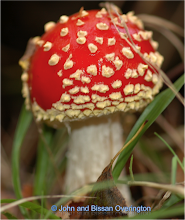
The mechanism of action of Eribulin is anti-mitotic and is mediated via tubulin binding, where it leads to G2/M block in the the cell-cycle; after prolonged stalling in this state, cells enter apoptosis and are then cleared.
Eribulin is a large (Mwt 729.9 for Eribulin and 826.0 for the mesylate salt) synthetic compound (an analogue of halichondrin B) an IUPAC name of the structure is 11,15:18,21:24,28 Triepoxy-7,9-ethano-12,15-methano-9H,15H-furo[3,2-i]furo[2',3':5,6]pyrano[4,3 b][1,4]dioxacyclopentacosin-5(4H)-one, 2-[(2S)-3-amino-2-hydroxypropyl]hexacosahydro-3 methoxy-26-methyl-20,27-bis(methylene)-, (2R,3R,3aS,7R,8aS,9S,10aR,11S,12R,13aR,13bS,15S,18S,21S,24S,26R,28R,29aS)-, methanesulfonate (salt). The most striking part of the structure is the highly fused, rigid ring system, as you would expect, the synthesis is complicated. The structure contains many of the classical features of natural products - a high number and fraction of defined chiral centers, a high ratio of oxygens to nitrogens, and a high ring count.

Full prescribing information here The license holder for Halaven™ is Eisai Inc.
The recommended dosing is 1.4mg/m2 as two intravenously delivered doses, separated by seven days, repeated after a further two weeks. An average adult human has a skin surface area of ca. 1.8 m2, so this would equate to a single dose of ~3 umol) The mean half-life of Eribulin is ~40 hr, with a mean volume of distribution of ~80 L/m2, and a mean clearance of ~1.8 L/hr/m2. Plasma protein binding is around 58%. Eribulin is metabolically stable and is largely unmetabolised, with the majority of the dosed drug being excreted as the dosed form in the feces.
Eribulin binds at (or near) the vinca domain of tubulin, a region that is located at the interface of two tubulin heterodimers when arranged end to end and overlaps the exchangeable GTP site on β-tubulin (Bai et al). β-tubulin is small family of related human proteins (PFAM:PF03953, HOMSTRAD:tubulin, and UniProt:P07437 for a specific member) that are key components of microtubules. There are multiple isoforms of β-tubulin e.g. "tubulin-beta1" , ChEMBLDB ID: CHEMBL1915, canSAR:link; and "tubulin-beta5", ChEMBLDB_ID:CHEMBL5444, canSAR link. Multiple 3-D structures are available for alpha-/beta-tubulins including PDBe:1tub. Tubulins are the target of several other classes of anticancer drugs, such as Paclitaxel (aka taxol) and Vinblastine (both similarly cytotoxic natural products)

NAME="Eribulin Mesylate" TRADEMARK_NAME="Halaven" ATC_code= L01C SMILES="CO[C@@H]([C@@H](C[C@H](O)CN)O1)[C@@H](CC(C[C@@H]2O[C@@]([C@H]3C4[C@@]([C@@H]5[C@@H](C6)O4)([H])O7)([H])[C@]7([H])CC2)=O)[C@@H]1C[C@@H](O[C@@H](CC[C@H]8C(C[C@H](CC[C@]6(O5)O3)O8)=C)C[C@H]9C)C9=C.CS(O)(=O)=O" InChI="/C40H59NO11.CH4O3S/c1-19-11-24-5-7-28-20(2)12-26(45-28)9-10-40-17-33-36(51-40)37-38(50-33)39(52-40)35-29(49-37)8-6-25(47-35)13-22(42)14-27-31(16-30(46-24)21(19)3)48-32(34(27)44-4)15-23(43)18-41;1-5(2,3)4/h19,23-39,43H,2-3,5-18,41H2,1,4H3;1H3,(H,2,3,4)/t19-,23+,24+,25-,26+,27+,28+,29+,30-,31+,32-,33-,34-,35+,36+,37+,38?,39+,40+;/m1./s1/i1-12,2-12,3-12,4-12,5-12,6-12,7-12,8-12,9-12,10-12,11-12,12-12,13-12,14-12,15-12,16-12,17-12,18-12,19-12,20-12,21-12,22-12,23-12,24-12,25-12,26-12,27-12,28-12,29-12,30-12,31-12,32-12,33-12,34-12,35-12,36-12,37-12,38-12,39-12,40-12,41-14,42-16,43-16,44-16,45-16,46-16,47-16,48-16,49-16,50-16,51-16,52-16;1-12,2-16,3-16,4-16,5-32" ChemDraw=eribulin.cdx
Full prescribing information here The license holder for Halaven™ is Eisai Inc.


Comments